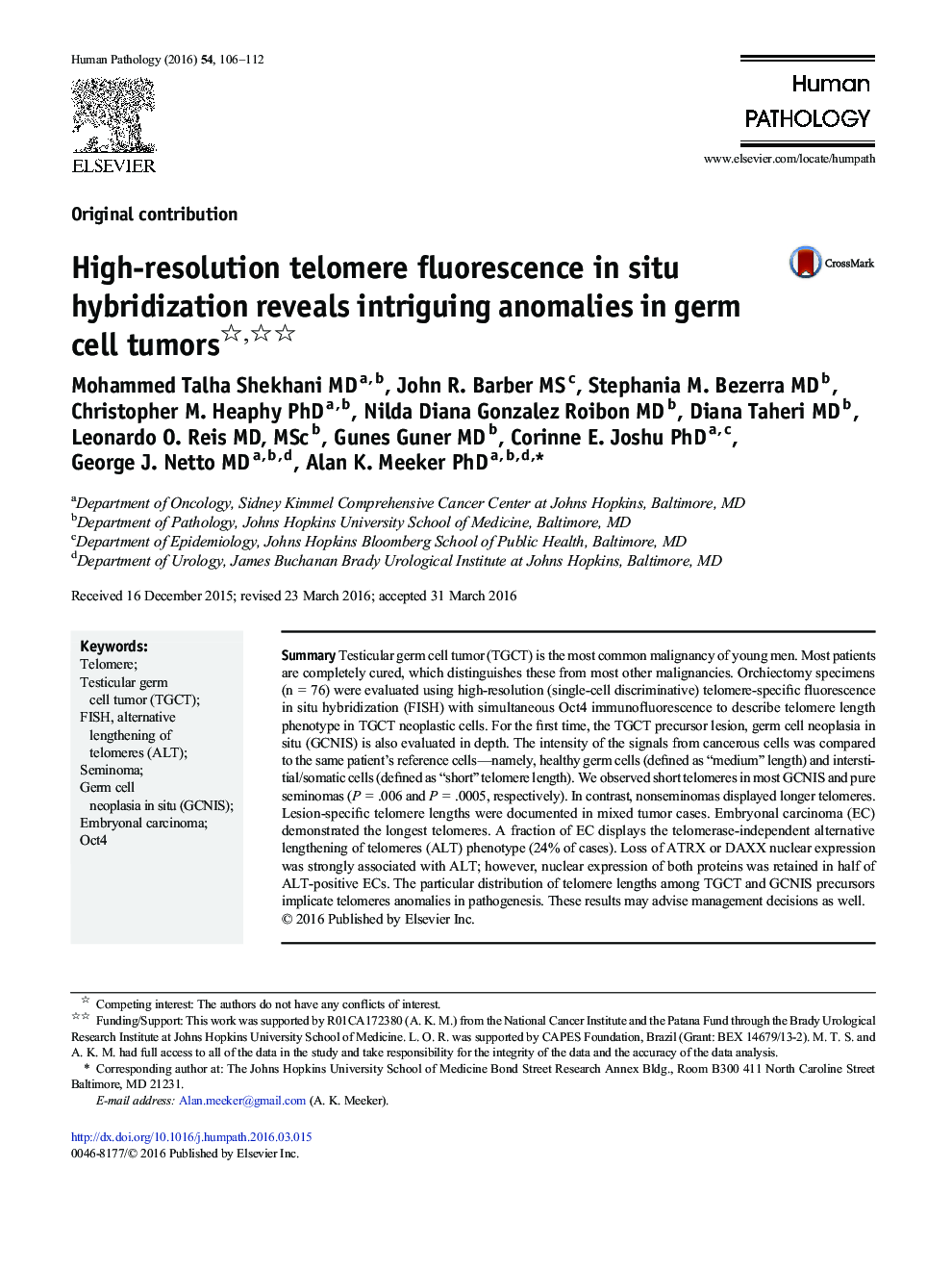| Article ID | Journal | Published Year | Pages | File Type |
|---|---|---|---|---|
| 6215425 | Human Pathology | 2016 | 7 Pages |
SummaryTesticular germ cell tumor (TGCT) is the most common malignancy of young men. Most patients are completely cured, which distinguishes these from most other malignancies. Orchiectomy specimens (n = 76) were evaluated using high-resolution (single-cell discriminative) telomere-specific fluorescence in situ hybridization (FISH) with simultaneous Oct4 immunofluorescence to describe telomere length phenotype in TGCT neoplastic cells. For the first time, the TGCT precursor lesion, germ cell neoplasia in situ (GCNIS) is also evaluated in depth. The intensity of the signals from cancerous cells was compared to the same patient's reference cells-namely, healthy germ cells (defined as “medium” length) and interstitial/somatic cells (defined as “short” telomere length). We observed short telomeres in most GCNIS and pure seminomas (P = .006 and P = .0005, respectively). In contrast, nonseminomas displayed longer telomeres. Lesion-specific telomere lengths were documented in mixed tumor cases. Embryonal carcinoma (EC) demonstrated the longest telomeres. A fraction of EC displays the telomerase-independent alternative lengthening of telomeres (ALT) phenotype (24% of cases). Loss of ATRX or DAXX nuclear expression was strongly associated with ALT; however, nuclear expression of both proteins was retained in half of ALT-positive ECs. The particular distribution of telomere lengths among TGCT and GCNIS precursors implicate telomeres anomalies in pathogenesis. These results may advise management decisions as well.
